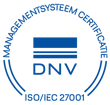The telecommunications system is coming to an end of an era. Since the telephone was invented in 1876, a vast network of telephone poles, wires and cables have been installed and maintained around the world. Although significant developments were made over the last 150 years to create the legacy phone system we know today, the advent of cloud-based and digital technologies has completely transformed telephony for tomorrow.
As Openreach plans to switch off all Public Switched Telephone Network (PSTN) and Integrated Services Digital Network (ISDN) services by 2025, businesses must migrate from these familiar legacy systems to a digital communications solution.
Voice-over-Internet Protocol (VoIP) is an excellent alternative telephony solution for today’s businesses. VoIP allows conventional phones to operate over computer networks, which means calls are transmitted through the internet instead of physical phone lines. Here are easy steps to help you make a smooth transition.
Survey Existing Telephony System
Begin by auditing your existing phone system, equipment, and network. Use this checklist to ensure you’ve covered all the bases.
- Number of Phones. Consider whether you’ll be keeping physical phones or transitioning to an all-digital system.
- Number of Numbers. Catalogue the number of phone numbers you have for your business and determine how many you need.
- Number of Extensions. Think about your system of reaching individuals at your organisation and whether separate extensions are needed for each employee or only for general departments.
- Unanswered Calls. Consider your process for handling unanswered calls. Think about whether you want to route these calls to voicemail systems or have an auto attendant route them to other queues.
- International Service. Think about how much international communications your company requires.
- Remote Communications. In this day and age of hybrid and remote work, consider how employees reach one another when they are out of the office or even in different time zones.
- Internet Connectivity. As your entire telephony system moves to the internet, having enough bandwidth is a critical component to success. You’ll want a provider that can provide both fast and stable connections.
- Compliance: Does the industry you work in require you to adhere to any compliance or regulation processes in relation to your telephony usage? ie call recording or call logging?
Evaluating these areas will help your organisation understand what equipment you’ll retain, which new investments need to be made, and the timeframe for the migration. Remember that this switchover is an excellent opportunity to evaluate your entire communications system and bring it to a new level of efficiency and effectiveness.
Set Goals
The next step is to come up with a detailed plan for the actual migration including your organisation's goals and objectives such as decreasing costs, increasing capacity, or improving remote connectivity. For each of your main goals, you’ll need to come up with a list of strategies and tactics to achieve them.
For example, if your organisation was one of many that moved to remote work during the global pandemic, this can be an excellent time to tighten up workflows and processes that may have been haphazardly thrown together during the emergency lockdowns. Take the time to audit the operating systems, software, applications, and equipment your remote teams need to be more productive. Survey your employees who are using the existing system to identify gaps and needs during this process so your new system can help fill those holes.
During this goal-setting stage, be sure to consider business continuity issues. For example, think about how your organisation will deal with natural disasters, lengthy power outages or geo-political situations. A back-up communications system will be required to ensure your business is not interrupted by such events.
Select a Provider
Just like selecting any third-party vendor, choosing a VoIP solution provider will require understanding what you need and what they can provide. Remember that this is an opportunity to upgrade your entire communications system for your business; be sure your partner can grow with you into the future.
Here are some questions to help you determine the best provider match for your organisation:
- Do you offer video and audio conferencing?
- How do you handle call routing?
- Do you have an auto attendant?
- Is there a mobile application available?
- Can your system integrate with our customer relationship management system?
- What kind of security system is included?
- What redundancy is built into the system?
- Are customer service and support available all the time?
- Are you integrated with industry-leading solutions such as Microsoft Teams or Cisco Webex platforms?
- If we were to expand into international markets, can you support us globally on a single platform or system?
Implement and Test
Once your plan is in place and you’ve selected a VoIP partner, it’s time to implement your new system. Another key consideration is how your employees will access the VoIP capabilities. If your business is keeping physical phones, you may want to consider a hosted PBX system. If you plan to have employees use their computers as phones, you may want to invest in high-quality headsets to help ensure quality and minimise background noise. Finally, if you have employees working remotely, consider how you can connect your system to personal devices securely.
After the system is in place, you’ll want to check the audio quality, latency and stability of the connection. Be sure calls do not drop frequently and that there is no delay between speaking and hearing. Testing these factors during high network usage is important because network congestion can negatively affect call quality.
Be sure your additional services work as expected. Check things like call routing, automated attendant performance and remote communication connections. Work with your VoIP partners to resolve any issues that arise.
Learn More
Evolve IP seamlessly integrates workplace technology to improve productivity, security, and end-user experience. We serve more than half a million users with a reach of 73 countries around the world. Reach out to discuss how we can help your organisation get ready for the PTSN 2025 switch off today as well as reap the benefits of cloud-based telephony and unified communication technology tomorrow.
















